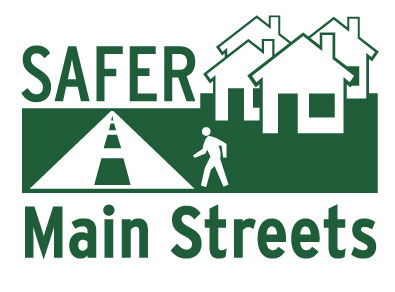Denver metro region to transform urban street spaces, making them safer and more accessible for the public in the COVID-19 environment
News Release

DENVER – A Denver region-wide effort is underway to improve safety and accessibility for the public, particularly for pedestrians, cyclists, the elderly and people with disabilities, who depend on a reliable urban street network.
The Colorado Department of Transportation in partnership with the Denver Regional Council of Governments (DRCOG) launched today the Safer Main Streets program. The program starts with a call-out to local government agencies in the metro area to submit their best and most innovative solutions that would reduce fatal and serious injury crashes, support all modes of travel and improve access and mobility for residents of all ages, incomes and abilities. Improvements would be made on state roads and various local streets in the urban street network such as Federal Boulevard, Colfax Avenue, Colorado Boulevard, Sheridan Boulevard and many others.
“Through the Safer Main Streets program, CDOT and DRCOG have created a model for communities of all sizes to implement cost-effective solutions to make transportation safe and accessible for all road users,” said Federal Highway Administrator Nicole R. Nason.
“The Safer Main Streets program is about transforming the way you use street spaces so the public can safely reach their destinations whether you drive, walk, use a wheelchair, ride a bike or take transit,” said CDOT Executive Director Shoshana Lew. “CDOT in collaboration with DRCOG is asking localities to submit practical, cost effective solutions that can be implemented in a reasonable time-frame. The solutions would include how these street spaces can be best used, particularly in this time of social distancing. Because this program is focused on a multitude of quick-to-deliver projects across the metro area, it can play an important and timely role in job creation and retention, and small business investment.”
CDOT and DRCOG have sent out information and an invitation for localities to submit their applications that will later be scored based on safety and accessibility goals. Project examples include sidewalks, crossings, pedestrian safety enhancements, traffic calming measures, improved lighting, and technology-driven improvements. All projects must be completed no later than summer of 2024 and earlier delivery is expected. About $47 million will fund the program with $9.5 million of that amount coming from DRCOG. Another $30 million is pending for improvements.
“We are excited about this partnership with CDOT to provide new dedicated funding focused on safety in the Denver region,” said DRCOG Executive Director Douglas Rex. “Our board has always made safety a priority, and this program works in concert with the recently adopted Taking Action on Regional Vision Zero, which provides a pathway towards eliminating fatal and serious injury crashes, with specific initiatives around collaboration, education and engagement, street design and increased funding. This is a significant step in the right direction.”
"To eliminate fatalities and serious injuries on our transportation system and give people real access to their main streets, we need to make them safe for everyone - whether they are walking, rolling, biking, riding transit or driving,” added Danny Katz, Director of the Colorado Public Interest Research Group. “This means adding things like safer pedestrian crossings, calming traffic to reduce dangerous speeding, and filling in gaps in sidewalks and bike infrastructure. This new program is an important step to realize this vision because CDOT and DRCOG are stepping up in partnership and investing almost $50 million to improve whole corridors across the region quickly.
For more information, go to:
ABOUT CDOT
CDOT has approximately 3,000 employees located at its Denver headquarters and in regional offices throughout Colorado, and manages more than 23,000 lane miles of highway and 3,429 bridges. CDOT also manages grant partnerships with a range of other agencies, including metropolitan planning organizations, local governments and airports. It also administers Bustang, the state-owned and operated interregional express service. Gov. Polis has charged CDOT to further build on the state’s intermodal mobility options.
ABOUT DRCOG
The Denver Regional Council of Governments is a planning organization where local governments collaborate to establish guidelines, set policy and allocate funding in the areas of transportation and personal mobility; growth and development; and aging and disability resources
